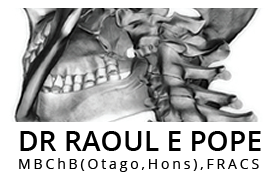Treatment Options for Brain Tumours
Talk to your Neurosurgeon or Dr Pope will be more than willing to discuss these with you.
Read more about specific brain Tumour types and their treatment options:
Talk to your Neurosurgeon or Dr Pope will be more than willing to discuss these with you.
Brain Tumours
What are adult brain Tumours?
Adult brain Tumours are diseases in which cancer (malignant ) cells begin to grow in the tissues of the brain. The brain controls memory and learning, senses (hearing, sight, smell, taste, and touch), and emotion. It also controls other parts of the body, including muscles, organs, and blood vessels. Tumours that start in the brain are called primary brain Tumours.
What are metastatic brain Tumours?
Often, Tumours found in the brain have started somewhere else in the body and spread (metastasized) to the brain. These are called metastatic brain Tumours.
What are the symptoms of an adult brain tumour?
A doctor should be seen if the following symptoms appear:
Frequent headaches.
Vomiting.
Loss of appetite.
Changes in mood and personality.
Changes in ability to think and learn.
Seizures.
What tests are used to find and diagnose adult brain Tumours?
Tests that examine the brain and spinal cord are used to detect (find) adult brain tumour. The following tests and procedures may be used:
CT scan (CAT scan): A procedure that makes a series of detailed pictures of areas inside the body, taken from different angles. The pictures are made by a computer linked to an x-ray machine.
A dye may be injected into a vein or swallowed to help the organs or tissues show up more clearly. This procedure is also called computed tomography, computerized tomography, or computerized axial tomography.
MRI (magnetic resonance imaging): A procedure that uses a magnet, radio waves, and a computer to make a series of detailed pictures of the brain and spinal cord. A substance called gadolinium is injected into the patient through a vein. The gadolinium collects around the cancer cells so they show up brighter in the picture. This procedure is also called nuclear magnetic resonance imaging (NMRI).
Adult brain tumour is diagnosed and removed in surgery. If a brain tumour is suspected, a biopsy is done by removing part of the skull and using a needle to remove a sample of the brain tissue. A pathologist views the tissue under a microscope to look for cancer cells. If cancer cells are found, the doctor will remove as much tumour as safely possible during the same surgery. An MRI may then be done to determine if any cancer cells remain after surgery. Tests are also done to find out the grade of the tumour.
What is the grade of a tumour?
The grade of a tumour refers to how abnormal the cancer cells look under a microscope and how quickly the tumour is likely to grow and spread. The pathologist determines the grade of the tumour using tissue removed for biopsy. The following grading system may be used for adult brain Tumours:
Grade I
The tumour grows slowly, has cells that look similar to normal cells, and rarely spreads into nearby tissues. It may be possible to remove the entire tumour by surgery.
Grade II
The tumour grows slowly, but may spread into nearby tissue and may become a higher-grade tumour.
Grade III
The tumour grows quickly, is likely to spread into nearby tissue , and the tumour cells look very different from normal cells.
Grade IV
The tumour grows very aggressively , has cells that look very different from normal cells, and is difficult to treat successfully.
The chance of recovery (prognosis) and choice of treatment depend on the type, grade, and location of the tumour and whether cancer cells remain after surgery and/or have spread to other parts of the brain.
Types of Adult Brain tumour
The extent or spread of cancer is usually described as stages. There is no standard staging system for brain tumour. Primary brain Tumours may spread within the central nervous system (brain and spinal cord), but they rarely spread to other parts of the body. For treatment, brain Tumours are classified by the type of cell in which the tumour began, the location of the tumour in the central nervous system, and the grade of the tumour.


